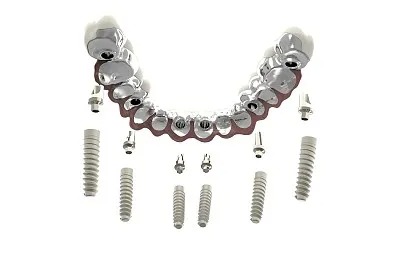The Process of Extracting a Tooth Understanding What to Expect Before During and After the Procedure
Summary: Tooth extraction may sound daunting, but understanding the process can alleviate anxiety. This article outlines what to expect before, during, and after the procedure. We begin with the preparation involved, including consultation and medication. Next, we explore the actual extraction process and the technologies utilized to ensure comfort and precision. Subsequently, we discuss the aftercare essential for proper healing and pain management. Finally, we address potential complications, arming you with knowledge to ease your mind. Each section is designed to provide clear insights for anyone bracing for tooth extraction.
1. Preparing for Tooth Extraction

The first step in the tooth extraction process begins long before the actual procedure; it involves thorough preparation. Patients typically schedule a consultation with their dentist to discuss the need for extraction and assess their dental health. During this visit, the dentist will review medical history, perform an oral examination, and take X-rays if necessary to determine the tooths condition and its root structure.
Its essential to communicate any allergies or medications youre taking with your dentist, as these can affect anesthesia choices and recovery. Your dentist may recommend stopping certain medications prior to the extraction to minimize the risk of bleeding or complications.
For patients experiencing anxiety, sedation options may be considered, ranging from nitrous oxide to IV sedation. Understanding these options and discussing them with the dentist can help set expectations and provide a clearer picture of what those experiencing anxiety can expect.
2. Understanding the Extraction Procedure
On the day of the procedure, the initial step involves prep and anesthesia. The dentist will administer local anesthesia to numb the area around the tooth, ensuring a pain-free experience. In some cases, general anesthesia might be employed for more complicated surgeries or for patients who may feel anxious about the procedure. Its crucial to feel comfortable with the choice you make regarding anesthesia.
Once the anesthesia has taken effect, the dentist will then proceed to extract the tooth. For a simple extraction, the dentist will use specialized tools to loosen the tooth and gently remove it from its socket. In the case of surgical extraction, where a tooth may be impacted or beneath the gum line, additional steps may be taken, such as making incisions in the gums.
Throughout the extraction process, the dentist ensures the patient remains comfortable and closely monitors any signs of stress or discomfort. The entire process, from anesthesia to completion, typically lasts between 30 minutes to an hour, depending on the complexity of the extraction.
3. Aftercare for a Smooth Recovery
The immediate period following tooth extraction is crucial for recovery. Dentists will provide post-operative care instructions that patients should follow closely. After the procedure, it is common to experience bleeding which usually subsides after a few hours. Patients are advised to bite gently on gauze pads placed over the extraction site to control bleeding.
Managing pain is another vital aspect of aftercare. Dentists may prescribe pain relief medications or recommend over-the-counter options. Ice packs can also help reduce swelling and discomfort in the initial days after the extraction.
Its important for patients to avoid certain activities for several days post-extraction. This includes vigorous exercise, using straws, and consuming hot beverages, which can dislodge the blood clot and lead to complications like dry socket. Adhering to the dentists instructions is vital for promoting healing and avoiding complications.
4. Identifying Potential Complications
Though tooth extraction is generally safe, there are potential complications to be aware of. One of the most common is dry socket, which occurs when the blood clot fails to develop properly or gets dislodged, leaving the bone exposed. This condition can result in significant pain and typically requires additional treatment from the dentist.
Infection at the extraction site is another potential complication. Signs of infection may include swelling, fever, or increased pain after a few days. If you notice these symptoms, it’s important to contact your dentist immediately.
Additionally, nerve damage or prolonged numbness can occur in rare cases, especially if the tooth is located close to the jaw’s nerves. Patients should discuss any concerns with their dentist before the procedure, as understanding risks can help manage expectations and anxiety.
Summary:
Tooth extraction, while it may seem intimidating, becomes less daunting when thoroughly understood. We discussed the essential preparations, the intricate extraction process, the critical aftercare needed for recovery, and the potential complications to consider. Overall, being informed will empower you throughout this dental experience.
This article is compiled by Vickong Dental and the content is for reference only.



